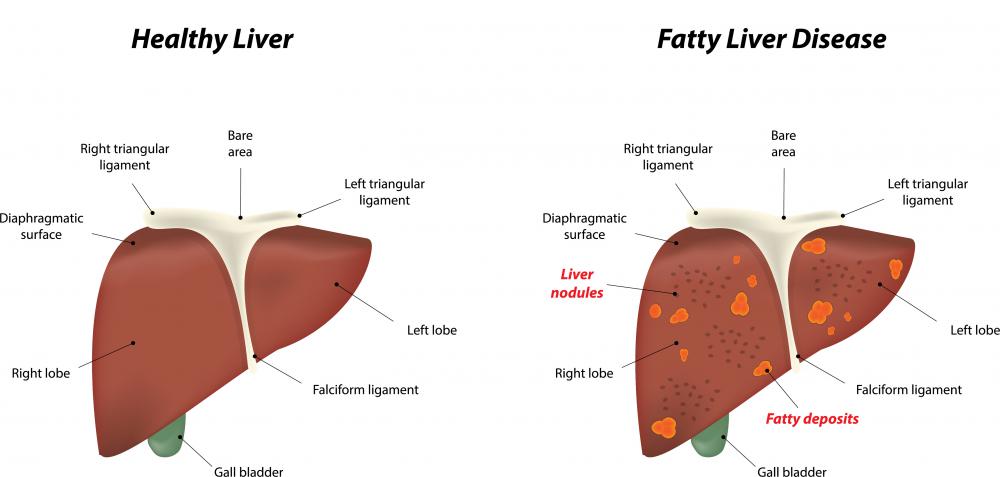At WiseGEEK, we're committed to delivering accurate, trustworthy information. Our expert-authored content is rigorously fact-checked and sourced from credible authorities. Discover how we uphold the highest standards in providing you with reliable knowledge.
What is Lipodystrophy?
Lipodystrophy is a disorder that affects the fatty tissue of the body and is primarily distinguished by a severe loss of body fat. People who are affected with lipodystrophy often develop a resistance to insulin, and have diabetes, a fatty liver, and high levels of triglycerides. There are several different kinds of the disease; some are genetic and others are acquired.
If a patient is affected by a genetic form of lipodystrophy, she may have a condition called Beradinelli-Seip Syndrome. It is a congenital disease that affects one in 12 million people in the United States, one in 1 million people in Norway, one in 500,000 people in Portugal, and one in 200,000 people in Lebanon. In newborns, it often presents itself when the newborn fails to thrive, or has giganticism, empty cheeks, an enlarged tongue, or developmental delays. Other genetic forms of the disorder include the Dunnigan-type familial partial lipodystrophy, the Kobberling-type familial partial lipodystrophy, and the mandibuloacral dysplasia type.

In the alternative, a patient can suffer from the acquired form of lipodystrophy. The acquired form can be broken down into several different types. For example, acquired generalized lipodystrophy can include the Lawrence Syndrome - which is usually preceded by an infection or an illness and involves extreme loss of body fat. There is also an acquired partial form of lipodystrophy, such as the Barraquer-Simons Syndrome, where the patient suffers from extreme fat loss in the face, torso, and arms while she suffers from fat hypertrophy – or an excess of fat - in the legs. One of the most common forms of the disease is found in patients who are treating HIV with antiretroviral drugs. They often have an abnormal accumulation of fat in their torso, while simultaneously suffering from extreme loss of fat in other localized areas.

Although in most cases, there is no treatment for lipodystrophy, the symptoms and related conditions can be treated. The treatments can be cosmetic, such as fat transplants, facial reconstruction, and liposuction. The treatments can also include drugs to manage diabetes, increased triglyceride levels, or other associated health issues. Yet, there is no way to halt the progression of the disease. Surgical options, like those mentioned above, are not recommended for children; however, they may be a good solution to those who suffer from deformities later in life.

Unfortunately, at this time, the prognosis is not ideal for those who suffer from lipodystrophy. People with the congenital form of the disease will typically live to become young adults or early middle-aged. In the alternative, if a patient suffers from the acquired form of the disease, she may live a bit longer and will usually survive until she becomes middle-aged. However, research is currently underway to improve the scenario of those affected by the life-threatening condition.
AS FEATURED ON:
AS FEATURED ON:
















Discuss this Article
Post your comments